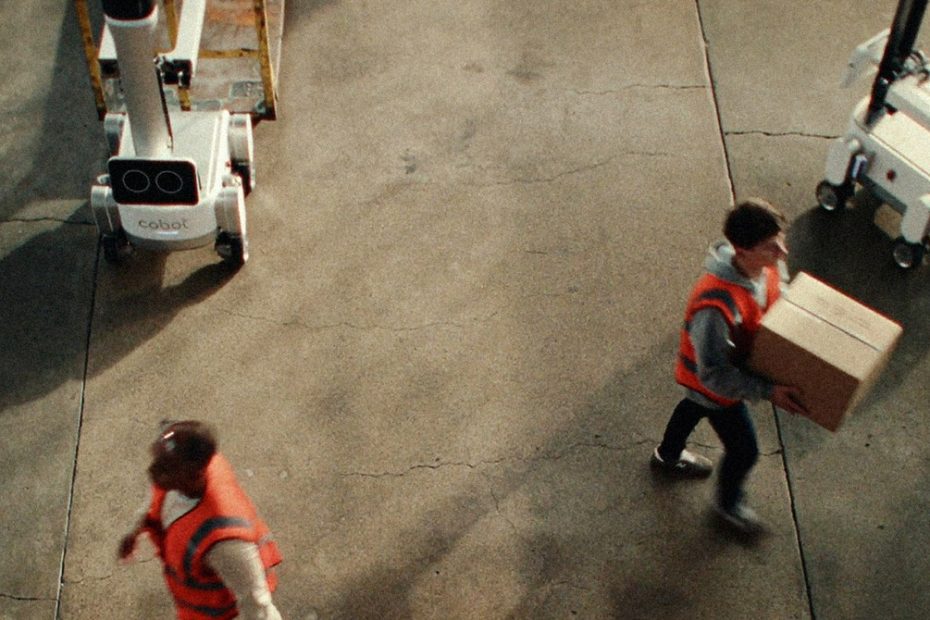About thirty Proxie robots are currently being tested by the shipping company Maersk and by the Mayo Clinic. The robots have worked for a total of more than 5,000 hours, moving 16,000 carts and traveling more than 1,000 kilometers. Several other companies, including Moderna, Owens & Minor and Tampa General Hospital, are exploring how to use proxies.
Unlike other robots, Proxie's battery is swappable to eliminate charging downtime. Cobot wouldn't say how much Proxie costs to buy or lease, but mobile robots often cost tens of thousands of dollars each.
The robots work alongside people, taking turns moving carts and navigating through busy spaces without encountering anyone. Porter says the intention is for the robots to reach higher levels as AI becomes more capable, allowing for more advanced manipulation and communication.
Cobot has a version of Proxie that responds to voice commands using a large language model to parse utterances, Porter says. When a worker says, “Go to dock 3 and grab the cart by the door,” the robot will respond accordingly. The company is also pursuing the development of algorithms that enable more advanced forms of manipulation.
Proxie may seem remarkably simple at a time when many companies are rushing to develop humanoid robots. But Porter says that while Amazon is working with one startup, Agility Robotics, to test its humanoid robot, the technology is simply too expensive and crude to be deployed on a large scale, he says. Some humanoids on the market cost tens of thousands of dollars, while others cost many hundreds of thousands of dollars. But autonomous capabilities vary enormously, as does reliability, making their deployment more expensive.
“At Amazon we've been looking at humanoids a lot,” says Porter. “There are real problems that need to be solved with something more human, but jumping all the way to a humanoid is super complicated. The AI is not really there yet.”
Instead, Proxie could replace more and more menial tasks that people often don't want to do. Erez Agmoni, general partner at Interwoven Ventures who was involved in bringing the Cobot pilot to Maersk, says it is promising and has the potential to be expanded.
“The main reason is their ability to use collaborative robots to support the teams without major changes to the warehouse or current equipment,” he says. “The team hated pushing the carts, which are very heavy, and they are happy that the robots do that.”
Fady Saad, founder of Cybernetix, a Boston-based venture capital firm specializing in robotics, says Cobot is pursuing a major new category of labor involving moving goods on trolleys, which could be addressed using recent advances in robotics. He adds that it's important that Proxie can evolve into something more capable.
“Porter is trying to build a platform that can later evolve into a humanoid,” says Saad. “I think this is the right approach.”
Porter isn't the only robotics hero pursuing something simpler than humanoids. Rodney Brooks, a pioneering researcher and co-founder of iRobot, is now the Chief Technology Officer of Robust.AI, a company that creates collaborative mobile robots that can assist human pickers in factories and warehouses.
“There is a real need in factories and warehouses to move things, but it's just crazy to think that humanoids will be doing this anytime soon,” Brooks says. “Wheels were invented for a good reason.”
What types of menial tasks would you like a robot to help you with? Would it make a difference to you whether the robot was humanoid or not? Write to me at hello@CBNewz to let me know.

